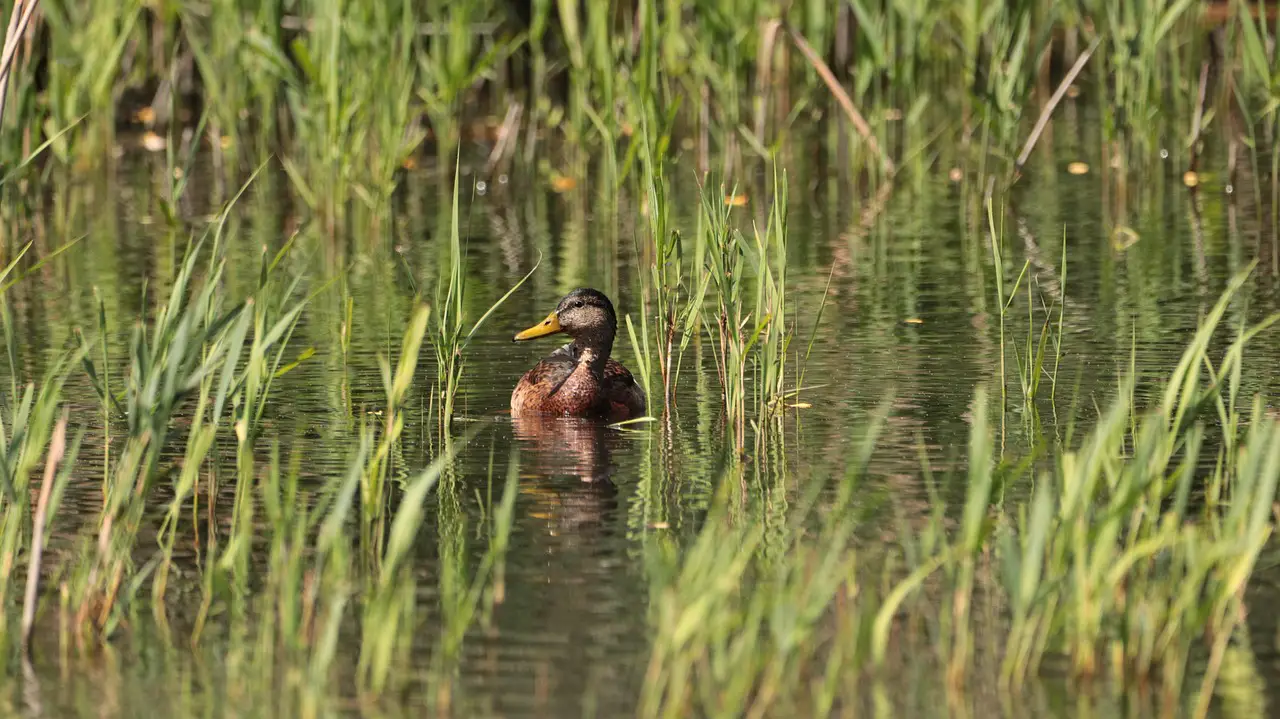Balsam fir trees require moderate amounts of water for optimal growth. They thrive in moist, well-drained soils and typically need about 1 to 2 inches of water per week during their active growing season. Adequate moisture is essential to support their health and development.
Understanding Balsam Fir Water Requirements

Balsam fir (Abies balsamea) is a native tree species found primarily in North America. Known for its fragrant needles and conical shape, it plays a significant role in forest ecosystems. Understanding the water needs of balsam fir is crucial for both cultivation and conservation efforts. These trees are particularly sensitive to water availability, which affects their growth, health, and resilience against diseases.
The water needs of balsam fir can vary depending on several factors, including soil type, climate, and age of the tree. Young balsam firs require more consistent moisture than mature trees. This section will explore these factors in detail.
Factors Influencing Water Needs
Several key factors influence the water requirements of balsam fir trees:
- Soil Type: Balsam fir prefers well-drained soils rich in organic matter. Sandy soils may drain too quickly, while clay soils may retain too much moisture.
- Climate: The local climate plays a significant role in determining water needs. Regions with high humidity may require less supplemental watering than drier areas.
- Tree Age: Young balsam firs are more vulnerable to drought stress and need consistent watering, especially during their early years.
- Seasonal Changes: During the growing season, particularly in spring and summer, balsam firs have higher water demands compared to fall and winter.
Watering Techniques
For those cultivating balsam fir trees, employing effective watering techniques is essential. Here are some methods to ensure that these trees receive adequate moisture:
- Deep Watering: Water deeply and infrequently to encourage deep root growth. This promotes stronger trees that can withstand dry spells.
- Mulching: Apply a layer of mulch around the base of the tree. Mulch helps retain soil moisture and reduces evaporation.
- Drip Irrigation: Consider installing a drip irrigation system for efficient water delivery directly to the roots, minimizing waste.
- Monitoring Soil Moisture: Use soil moisture meters to determine when to water. This prevents overwatering and underwatering.
Signs of Water Stress
Recognizing the signs of water stress in balsam fir is crucial for maintaining their health. Common indicators include:
- Yellowing Needles: When needles turn yellow or brown, it may indicate insufficient water supply.
- Wilting: Wilting branches or drooping foliage can signal that the tree is not receiving enough moisture.
- Pest Infestation: Stressed trees are more susceptible to pests and diseases, which can further compromise their health.
Optimal Watering Schedule
The optimal watering schedule for balsam fir should align with the tree’s life cycle and environmental conditions. Generally, during the active growing season, aim for:
| Month | Watering Frequency |
|---|---|
| April – June | Weekly |
| July – August | Every 5-7 days |
| September – October | Bi-weekly |
This schedule may need adjustments based on specific weather conditions and soil moisture levels. Regular monitoring is key to ensuring that balsam fir trees receive the right amount of water throughout their growth stages.
Soil Conditions for Balsam Fir
The water needs of balsam fir are closely linked to the soil conditions in which they are planted. To ensure that these trees receive the right amount of moisture, it is essential to understand the characteristics of suitable soils.
Ideal Soil Composition
Balsam fir thrives in soils that are rich in organic matter. The ideal soil composition should include:
- Loamy Soil: A mixture of sand, silt, and clay, loamy soil provides good drainage while retaining moisture.
- Organic Matter: High levels of organic matter improve soil structure and moisture retention. Adding compost or well-rotted manure can enhance soil fertility.
- pH Levels: Balsam fir prefers slightly acidic soils with a pH between 5.0 and 6.5. Testing soil pH can help determine if amendments are necessary.
Drainage Capacity
Proper drainage is vital for balsam fir trees. Excess water can lead to root rot and other issues. Therefore, it is crucial to evaluate the drainage capacity of the soil:
- Good Drainage: Soils should allow water to percolate through without becoming waterlogged.
- Drainage Tests: Conducting a simple drainage test by digging a hole and filling it with water can help assess drainage. If water remains for more than 24 hours, the soil may not drain well.
Watering Techniques Based on Environment
The environment in which balsam fir trees are planted significantly affects their watering needs. Different settings may require tailored watering techniques.
Forested Areas
In natural forested environments, balsam fir benefits from the surrounding trees and vegetation, which helps retain moisture. However, some considerations include:
- Competing Vegetation: Other plants may compete for water and nutrients, so monitoring soil moisture is important.
- Natural Mulching: Leaf litter and fallen branches can act as natural mulch, helping retain moisture in the soil.
Urban Settings
Balsam firs planted in urban areas may face unique challenges such as compacted soil and limited access to water sources. Effective strategies include:
- Irrigation Systems: Installing a drip irrigation system can ensure consistent moisture levels without overwatering.
- Soil Amendments: Adding organic matter can improve soil structure in compacted urban soils, enhancing moisture retention.
Seasonal Watering Adjustments
The watering needs of balsam fir fluctuate with the seasons. Understanding these changes can help ensure healthy growth throughout the year.
Spring Growth
During spring, balsam fir begins its active growth phase. This period requires careful attention to watering:
- Increased Watering: As new buds develop, trees may require more water to support growth.
- Monitoring Rainfall: Keep track of rainfall during this season to adjust supplemental watering accordingly.
Summer Heat
Summer can bring heat stress. To cope with high temperatures:
- Frequent Checks: Regularly check soil moisture levels to prevent drought stress.
- Mulch Maintenance: Ensure mulch layers remain intact to conserve moisture around the roots.
Autumn Preparation
As summer transitions to autumn, it is essential to prepare balsam fir for winter:
- Gradual Watering Reduction: Slowly reduce watering frequency as temperatures drop and growth slows.
- Last Watering Before Winter: Give trees a deep watering before the ground freezes to ensure they enter winter with adequate moisture reserves.
Pest and Disease Management Related to Water Needs
Water availability plays a significant role in the health of balsam fir trees. Insufficient watering can lead to stress, making them more susceptible to pests and diseases.
Pest Vulnerabilities
Some common pests that affect balsam fir include:
- Balsam Woolly Adelgid: This pest can cause needle drop and tree decline, especially in stressed trees.
- Bark Beetles: Water-stressed balsam firs are more likely to be attacked by bark beetles, which can compromise tree health.
Disease Risks
Drought stress can also increase the risk of fungal diseases such as:
- Root Rot: Excessively dry conditions followed by heavy watering can create an environment conducive to root rot.
- Needle Blight: Stressed trees are more vulnerable to needle blight diseases, which can lead to needle loss and overall decline.
By understanding the connection between water needs and tree health, cultivators can take proactive measures to protect balsam fir from pests and diseases. Regular monitoring and appropriate care will contribute to the overall resilience of these beautiful trees.

Watering Balsam Fir in Different Growth Stages
The water needs of balsam fir change throughout its life cycle. Understanding these variations is essential for promoting healthy growth and development. Each growth stage has specific requirements that should be met to ensure the tree’s vitality.
Seedling Stage
During the seedling stage, balsam firs are particularly vulnerable. They require consistent moisture to establish strong root systems. Key considerations include:
- Frequent Watering: Water seedlings regularly, ensuring the soil remains moist but not waterlogged. Aim for about 1 inch of water per week.
- Soil Conditions: Ensure that the soil is well-drained yet retains moisture. The addition of organic matter can enhance moisture retention.
- Shade Protection: If planted in direct sunlight, provide temporary shade to prevent moisture loss through evaporation.
Juvenile Stage
As balsam firs grow into their juvenile stage, their water needs begin to stabilize. However, they still require attention:
- Moderate Watering: Reduce watering frequency slightly, but continue to monitor soil moisture levels closely.
- Mulching: Apply mulch around the base of the tree to conserve moisture and suppress weeds.
- Fertilization: During this stage, consider a balanced fertilizer to support growth, ensuring it does not affect water absorption.
Mature Stage
Once balsam firs reach maturity, they become more resilient to fluctuations in water availability. However, they still have specific needs:
- Deep Watering Practices: Introduce deep watering sessions during dry spells to encourage deep root growth.
- Seasonal Adjustments: Monitor rainfall and adjust watering accordingly, especially during dry summer months.
- Long-Term Health Monitoring: Keep an eye on overall health and vigor, as mature trees can still suffer from drought stress if conditions are severe.
Best Practices for Watering Balsam Fir
To effectively manage the water needs of balsam fir trees, implementing best practices is crucial. These strategies will ensure that trees receive adequate hydration while preventing potential issues such as overwatering or drought stress.
Watering Techniques
Different watering techniques can be employed based on the planting environment and specific tree needs:
- Soaker Hoses: Using soaker hoses allows for slow, deep watering directly to the roots, minimizing evaporation.
- Watering Cans: For young seedlings, hand watering with a can ensures precise control over the amount of water delivered.
- Irrigation Systems: Consider installing an automated irrigation system for larger plantings to maintain consistent moisture levels.
Timing and Frequency
The timing and frequency of watering are essential for effective moisture management:
- Early Morning Watering: Watering early in the morning helps reduce evaporation losses and allows roots to absorb moisture throughout the day.
- Avoid Watering During Rain: Do not water if rainfall has occurred or is expected within 24 hours to prevent oversaturation.
Impact of Environmental Factors on Water Needs
The water requirements of balsam fir trees can be significantly influenced by various environmental factors. Awareness of these factors allows for better management practices.
Temperature Variations
Temperature plays a pivotal role in determining how much water balsam fir needs:
- High Temperatures: During hot weather, trees may lose moisture rapidly through transpiration, necessitating increased watering.
- Cool Temperatures: In cooler months, water uptake decreases as the tree enters dormancy. Adjust watering accordingly during fall and winter.
Rainfall Patterns
The amount and frequency of rainfall directly affect watering schedules:
- Drought Conditions: In prolonged dry spells, supplemental watering becomes crucial to prevent stress and ensure growth.
- Heavy Rain Events: After heavy rains, assess soil drainage and adjust future watering practices to avoid overwatering issues.
Wind Exposure
Wind can exacerbate moisture loss in balsam fir trees:
- Windbreaks: Establish windbreaks or plant trees in sheltered locations to reduce wind exposure and moisture loss.
- Drought Stress Indicators: Monitor for signs of stress during windy conditions, as trees may require additional watering during such events.
The Role of Mulching in Water Conservation

Mulching is an effective strategy for conserving moisture around balsam fir trees. A well-maintained mulch layer provides numerous benefits that support water retention and overall tree health.
Benefits of Mulching
The application of mulch around the base of balsam fir offers several advantages:
- Moisture Retention: Mulch helps retain soil moisture by reducing evaporation rates from the soil surface.
- Temperature Regulation: A mulch layer can help regulate soil temperature, keeping it cooler during hot days and warmer during cold nights.
- Weed Suppression: Mulch prevents weeds from competing with balsam fir for water and nutrients, promoting healthier growth.
Selecting the Right Mulch
Selecting an appropriate type of mulch is important for maximizing its benefits. Consider
Selecting the Right Mulch
Selecting an appropriate type of mulch is important for maximizing its benefits. Consider the following options:
- Wood Chips: These are a popular choice as they decompose slowly and provide long-lasting benefits. They also improve soil structure as they break down.
- Bark Mulch: Bark mulch is aesthetically pleasing and effective at moisture retention. It is also effective in suppressing weeds.
- Straw or Hay: These materials can be used as mulch but may need to be replaced more frequently as they decompose faster.
When applying mulch, ensure that it is spread evenly around the base of the tree, avoiding direct contact with the trunk to prevent rot.
Seasonal Care for Balsam Fir
Caring for balsam fir requires attention throughout the seasons. Each season presents unique challenges and opportunities for maintaining optimal water levels and overall health.
Spring Care
In spring, as temperatures rise and growth resumes, it is crucial to provide adequate water:
- Monitor Soil Moisture: Check the soil regularly to ensure it remains moist, especially after winter thawing.
- Adjust Watering Schedule: Increase watering frequency if rainfall is insufficient during this active growth period.
- Fertilization: Apply a balanced fertilizer to support new growth, being cautious not to over-fertilize, which can affect water uptake.
Summer Care
During summer, the heat can increase water evaporation rates. Key practices include:
- Deep Watering Sessions: Water deeply but less frequently to encourage root growth. This helps the tree establish a robust root system.
- Regular Inspections: Keep an eye out for signs of drought stress, such as wilting or yellowing needles, and adjust watering accordingly.
Autumn Preparation
Autumn is a transition period where care focuses on preparing balsam fir for winter:
- Final Watering: Ensure trees receive a deep watering before the ground freezes. This helps them enter dormancy with sufficient moisture.
- Mulch Maintenance: Replenish mulch if necessary to ensure continuous moisture retention through the colder months.
Winter Care
In winter, while balsam firs are dormant, they still require some form of care:
- Irrigation Needs: During dry winters, consider occasional watering during warm spells to prevent desiccation.
- Protection from Snow Loads: Ensure that heavy snow does not accumulate on branches, which can cause breakage. Gently shake off snow if necessary.

Final Thoughts
The water needs of balsam fir are integral to their growth and health. By understanding how to manage these requirements throughout different stages of life and varying environmental conditions, you can cultivate resilient and thriving trees. Proper watering techniques, careful attention to soil conditions, and seasonal care are essential practices for ensuring that balsam firs flourish in your garden or landscape.
Mulching plays a significant role in conserving moisture, regulating soil temperature, and suppressing weeds. Furthermore, being proactive about monitoring soil moisture and adjusting watering schedules according to seasonal changes will lead to healthier trees and a vibrant ecosystem. In conclusion, by implementing these strategies and being mindful of the specific needs of balsam fir, you can enjoy the beauty and benefits these trees bring to your environment for many years to come.
